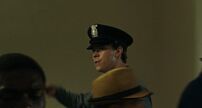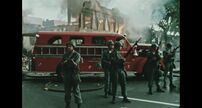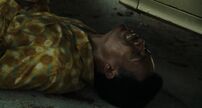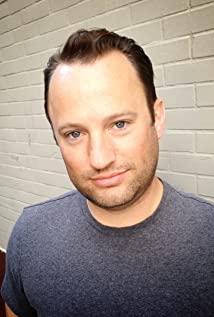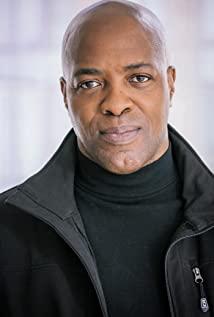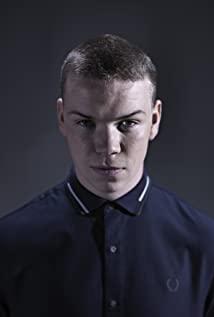Kathryn Bigelow has an unusual preference for politics, the earlier "K19: The Widowmaker", the Oscar-winning "The Hurt Locker", and the slightly speculative "The Hunt for Bin Laden" . This year's "Detroit" will focus on the eternal racial issue in the United States - the 1967 Detroit black riots. For the ins and outs of the incident, you can Baidu it yourself, and I will not repeat it, because my statement may not be able to cover the whole story and the story. details, and transcribing it here is really meaningless. I have never doubted Bigelow's control over this type of film. Before watching this film, I boldly predicted that the film would not hit the street. Now it has confirmed my guess and judgment. The film is neatly completed and the logic is clear. There are classic film narrations, if you ask me about my first impression of the film, I will say "the film is good, it's very beautiful", but it can only be limited to the level of good-looking, which means that the film is still far from the classic. Distance, or in terms of the innovation of film grammar, the film still seems to be quite satisfactory, and the highlights are lackluster. Compared with "The Hurt Locker", Bigelow became mainstream and conservative in "Detroit", or lost his spirit and played a safety card. She made a compromise on the narrative. While restoring the incident, she Caters to the tastes of the audience and the judges. But it cannot be said that the film is mediocre as a whole and has no merit, because in the first 20 minutes of the film, Bigelow's signature hand-held photography, the shaking lens reveals the restlessness and unease of the city, and a few pictures seem to see a little bit The shadow of Spike Lee, this beginning is quite exciting, and Bigelow's original intention is to restore rather than process it, but as a black man in the hotel jokingly shoots at the National Guard on the street with a starting gun, Bigelow seems to Suddenly misfired, she created an excessively tense atmosphere, but the surface tension of the picture was reduced or disappeared. The overly full emotions have filled the entire screen, which kidnapped the emotions of the audience sitting on the fourth wall, and at the same time It deprives the audience of their own choices and judgments. In fact, we can compare it with another film with a similar theme. This film is "Bloody Sunday" by Paul Greengrass, who once topped the Berlin Film Festival. Fans may be more familiar with his "Bourne Bourne". (2 and 3) The dazzling sharp cuts in it, but in fact this is not the original pioneering Greengrass, who personally always thinks his peak is "Bloody Sunday", as for the acclaimed "Bloody Sunday" a few years ago. Captain Phillips, who has turned into a Hollywood director without much personality (I love the last few minutes at the end of the film). Bigelow's Detroit If the first 20 minutes of "Bloody Sunday" was a bit close, it was really hard to memorize after that. Greengrass's shots are swimming most of the time, and the trajectories are complicated. Even if they stop, they are relatively short or taken over the shoulder. He likes to put the main dialogue characters in the foreground but only gives a part of the side view, without the first part of the dialogue. The faces of the two groups of characters are placed in the background, and he balances the primary and secondary aspects of the picture and sound, so that the audience's senses have options, and their attention is not passively restrained by the film. And Greengrass used a short black screen as a cutscene (some scenes of the same scene also used this method) to distance the audience. Several times when I had a tendency to immerse in a certain picture, this black screen forced me to I didn’t realize its function at first, and it was only after many emotional interruptions that I discovered the subtleties of this black screen (this black screen treatment and Gaspar Nou’s use of the black screen in “Love”, 2 are quite different). And Greengrass has darkened the tone of the film, but it is different from the blue-green tone popular in Hollywood, but retains more blue-gray combined with the cold weather, making the film as real as a documentary, because the phenomena of things are presented. Intuition itself does not act on the viewer's heart with bright colors. Looking at Detroit again, it uses a nostalgic orange-yellow tone. Although this replicates the texture of the era, it somewhat weakens the original tension of the picture. In the film's important hotel interrogation scene, the use of close-up shots is too repeated. Compared with the anti-climax scattered narrative in "Bloody Sunday", Bigelow uses the film's editing functions to carefully construct the dramatic climax, and she Add two clips where whites are very friendly to blacks. One is when the black singer is running away from the hotel when he encounters a white policeman who kindly supports him and takes him to the hospital Great contrast); the second is a conversation between a white doctor and a black father of a dead child outside the morgue, the addition of these two overly intentional and superficial clips is indeed true for a director like Bigelow There is a loss of standard. There is also the film's use of deliberate and sad soundtracks for the death of several black people and the fear and grief of survivors to accuse violence, while "Bloody Sunday" handles similar situations in a different way, such as in the play After a young man who was one of the protagonists was shot and killed, a picture shows relatives in the background embracing and weeping, in the foreground is a crowd walking back and forth, and a picture of his girlfriend leaving in the middle of the night when he was not there, no heartbreak. Lung's wailing, and no soundtrack was used to amplify this grief. And "Detroit" is very fresh Clearly created the images of three police officers and several black people who were questioned, and used characters to promote the plot to infect the audience. However, "Bloody Sunday" abandoned the creation of characters and adopted event-driven. In fact, the characters in the film can be replaced. Anyone who becomes another image will not affect the quality and texture of the film in the slightest. After comparison, it is not difficult to find that "Bloody Sunday" rejects to please the audience and is based on restoring the incident, while "Detroit" is willing to reject and welcome the audience, so the two are judged against each other.
View more about Detroit reviews



